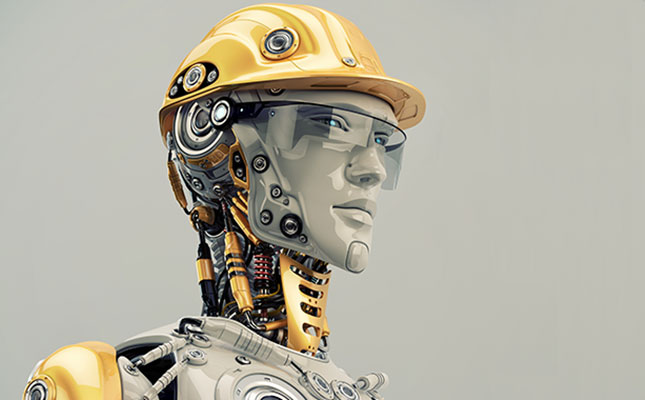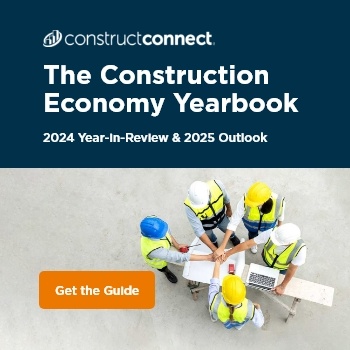By: Anastasios Koutsogiannis on October 14, 2020
5 Major Changes Coming to the Construction Industry in the Future
It’s no secret that construction can be very slow when it comes to change. Nevertheless, the advent of new technologies has dramatically contributed toward the modernization of the whole industry. A general need for change has emerged as a result of the serious productivity problems that are noticed in big markets like the United States and the United Kingdom.
Some changes are apparent today and a further readjustment of the whole sector is anticipated in the near future. For that reason, we decided to do our research and present to you five of the most noteworthy changes which are about to come in construction:
1. Construction Software and Full Integration
First things first, construction software is expected to change our industry once and for all. In fact, it has already done that. More specifically, it has managed to empower the whole construction process by ameliorating the communication between the different parties involved in a project. One of the elements that have made construction software so indispensable has to do with the fact that it allows for the real-time exchange of information between the various project agents. This means a significant decrease of budget miscalculations and task delays.
What we described in the previous paragraph is the present. But the new era in construction will truly have arrived if we manage to make full integration the rule. The United Kingdom made some very brave steps toward that direction through the BIM Level 2 Mandate. Despite the fact that there still are many complaints on how the British government has handled the issue until today, it can be proved to be a game changer for construction globally.
2. Augmented and Virtual Reality
As a continuation of the first point above, augmented and virtual reality are gaining more and more space in construction. AR and VR can truly take the construction processes to the next level. Thanks to this cutting-edge technology, construction managers can now have a detailed overview of the whole project and plan ahead.
On top of that, this virtual projection of the structure’s final form can help in preventing costly mistakes and allow for fewer delays. What is more, the better the planning the less the waste of resources given the fact that you will be in a position to know beforehand the exact needs of your construction project.
Furthermore, it also is a big advantage in terms of safety. It's currently very expensive and dangerous to put humans underwater or below ground to work on highly technical tasks requiring precious hand tools. The concept of robotic underwater welders or pipe-fitting robots is currently in use but sparsely. Well before the AI (artificial intelligence) is good enough, VR headsets will allow us to see everything in the field of machines view and control arms and tools to get them done. There will come a day that a crane operator will have the same type of helmet as a modern-day Apache helicopter pilot. This will allow crane operators to get far more precise movements and see all angles of the crane as it swings from one point to another. Again, the price of this modern equipment is currently cost-prohibitive, but the technology for this type of work is already in existence today.
Well before the AI (artificial intelligence) is good enough, VR headsets will allow us to see everything in the field of machines view and control arms and tools to get them done. There will come a day that a crane operator will have the same type of helmet as a modern-day Apache helicopter pilot. This will allow crane operators to get far more precise movements and see all angles of the crane as it swings from one point to another. Again, the price of this modern equipment is currently cost-prohibitive, but the technology for this type of work is already in existence today.
3. Next Generation Tools
There are always going to be better and more powerful tools. This has been the case for thousands of years. But the next generation of tools are different. These devices and robots come with their own software, that's a different story. The software comes with updates and eventually machine learning. This means the average low-level worker is potentially replaceable in 20 years. But we have to keep in mind that emerging technology takes the form of software and hardware. A great example of extraordinary hardware technology undoubtedly is exoskeletons.
Exoskeletons are devices that allow workers to get more efficiency out of all movements while also being able to lift, carry, and pull more. They can reduce daily strain and provide an additional element of safety on site. However, these robots are still far too expensive for the benefit they provide at the moment. They're much more likely to be seen after 10 or more years when the software is flawless, batteries are improved, and the price drops.
4. New Workforce Type
By now, it’s clear that construction is rapidly changing and that a new reality for the whole sector will emerge in the near future (if it hasn’t already). This will, of course, have a strong impact on the profile of the industry and by extension on its workforce type. Construction has a unique opportunity to attract skillful and educated young professionals. The advent of new technologies in combination with the extensive use of software has started transforming construction to a promising career field.
If we also take into account the serious construction labor shortage that the industry has to undergo at the moment, this is great news! As our sector changes, it becomes obvious that construction can finally provide long-term career options for a new technological savvy workforce. To get a clearer understanding of what this means, think about it like this; In 2017, there are still construction companies working on pen and paper to complete most of their projects. There is a younger generation that’s more comfortable with technology rising quickly. When this generation gets into leadership roles in the top construction companies, there will be an expedited shift towards futuristic solutions.
To get a clearer understanding of what this means, think about it like this; In 2017, there are still construction companies working on pen and paper to complete most of their projects. There is a younger generation that’s more comfortable with technology rising quickly. When this generation gets into leadership roles in the top construction companies, there will be an expedited shift towards futuristic solutions.
5. Green Construction
Last but certainly not least, green construction! The amelioration of the construction process in conjunction with the productivity increase allows for a ‘greener’ construction process to arise. The ultimate goal, in this case, is the establishment of sustainable building as the prevailing construction procedure. It goes without saying that, it requires tons of work and effort before this ambition comes to life on a greater scale.
In short, green construction can have some great benefits not only for our industry but for our environment and everyday lives. More specifically, it can help in reducing energy waste, increasing productivity and establishing higher living and aesthetic standards. There still are many who are reluctant toward green construction due to the higher cost during the construction process. Nonetheless, this is not correct if we consider the full living cycle of the building. A sustainable building structure can be much more beneficial in the long run. That is why green building is an option that has to be thoroughly explored in the near future.
Conclusion
All in all, it becomes apparent that many things are about to change within the construction industry. A new era is approaching thanks to cutting-edge technology. Construction software has surely played a crucial role in this change and for many, it is expected to be the basis on which the rest of the changes in construction will eventually be established.
 Anastasios Koutsogiannis is Content Manager at GenieBelt, a construction project management software and mobile app.
Anastasios Koutsogiannis is Content Manager at GenieBelt, a construction project management software and mobile app.
Need more project leads? ConstructConnect finds you the best construction projects to bid on and win more work.


 Sign In
Sign In



